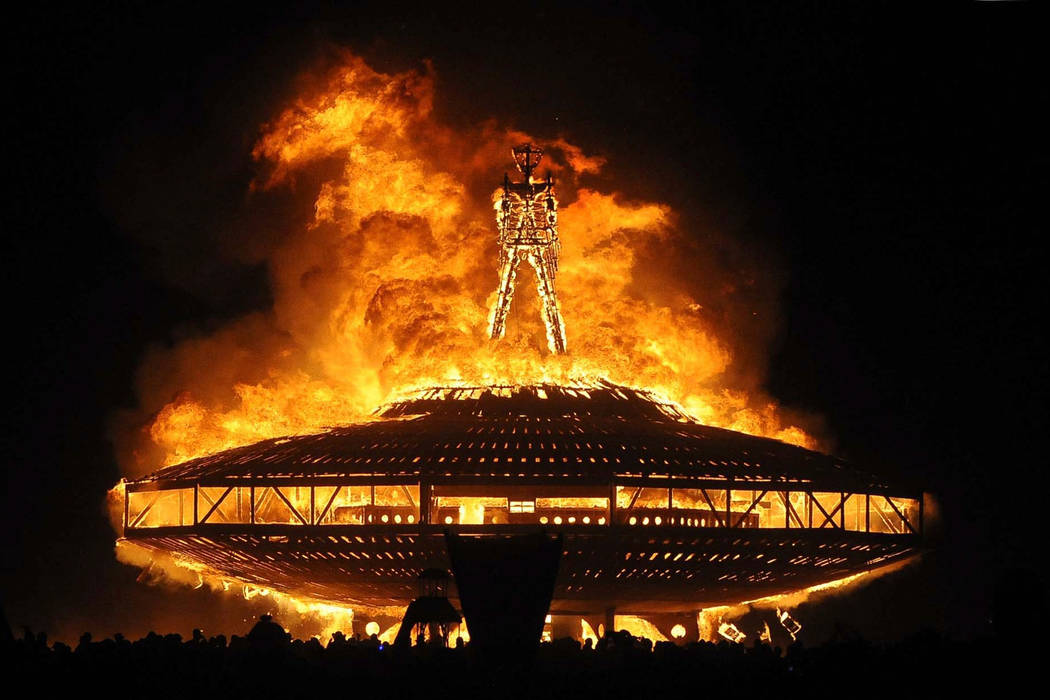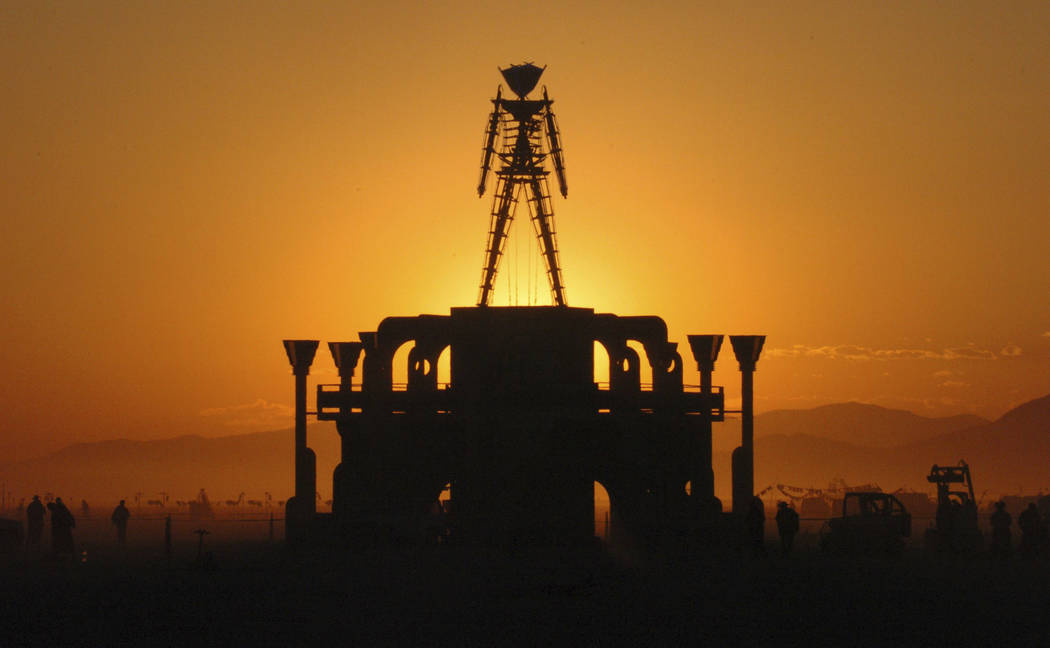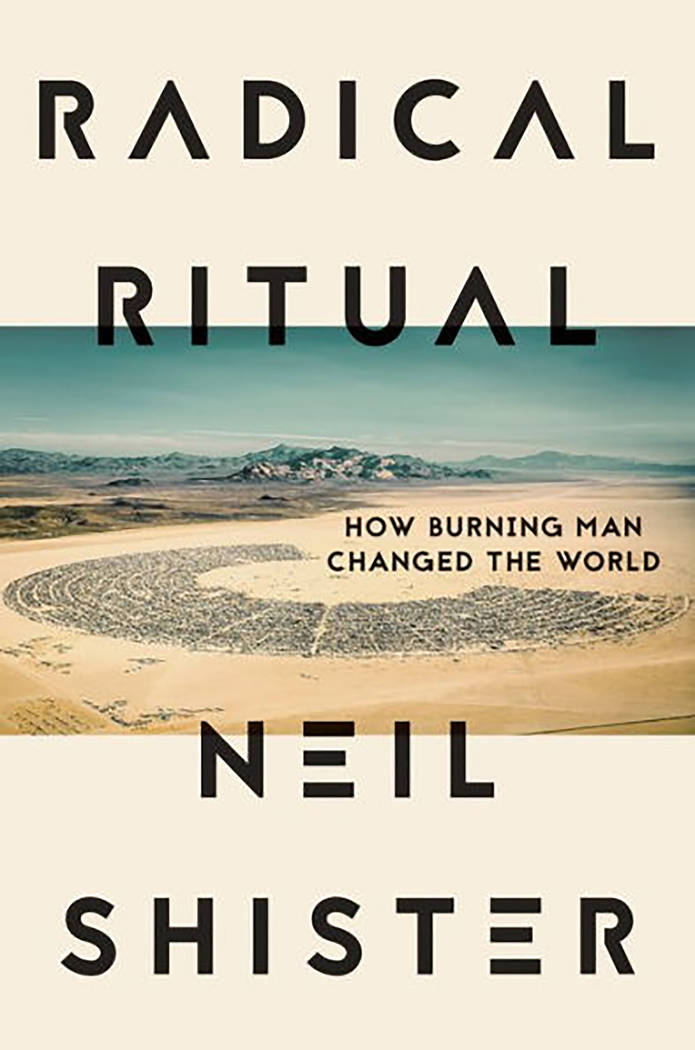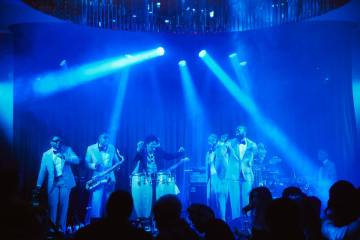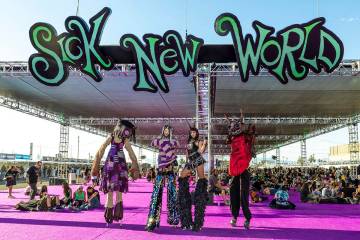2 books explore evolution of Burning Man festival
The Burning Man festival began in 1986 as an intimate, intensely personal gathering on a San Francisco beach. When the latest incarnation of the event begins Sunday in Nevada’s Black Rock Desert, running through Sept. 2, tens of thousands of celebrants will gather to celebrate art, music and share in a sense of counterculture reminiscent of the ’60s but totally modern.
How Burning Man got from there to here — and the meaning of it all — is the focus of two recently published books.
“Compass of the Ephemeral: Aerial Photography of Black Rock City through the Lens of Will Roger” (Smallworks, $29.99) features photographs taken by Roger, a Burning Man founder, as well as archival images of festivals over the years. “Radical Ritual: How Burning Man Changed the World” by Neil Shister (Counterpoint, $26) is a telling of the Burning Man story, based in large part on interviews with the festival’s principals.
Roger’s photos turn the Burning Man festival itself into a piece of art. From the air, the half-circle collection of tents and recreational vehicles that make up Black Rock City take on the appearance of a geoglyph, one of those massive designs carved into the ground that can be seen only from the air. Other photos depict Burning Man art installations, poster and ticket designs through the years and other archival visuals, fleshed out with essays about Burning Man history and the festival experience.
Burners and armchair Burners both will love the book’s anecdotes and trivia. For example: Harley K. Dubois, founding board member of the Burning Man Project, noted that the festival’s grid structure was introduced in 1997, a move that began the transformation of a “camping trip” into a city.
In 2004, Burning Man’s Ten Principles were written, and Dubois writes: “We began to name and own our identity as ‘Burners.’ A culture had been defined. We reached the mainstream, but we had not sold out; we simply had arrived.”
In addition to chronicling the physical development, the book looks at the Burning Man’s emotional maturation. Dubois notes that the book “gives a glimpse into how the human psyche can be provoked into feeling a sense of belonging through sharing this particular physical space, of how a location and design can help unify people, creating an identity that can be shared across the globe.”
In “Radical Ritual,” Shister, a former Time correspondent and TV critic for the Miami Herald, offers more of an outsider’s view. Through interviews with the event’s principals and behind-the-scenes stories of how Burning Man and Black Rock City work, he offers a glimpse of festival history that not even its dust-covered participants are likely to see.
Shister also explores the ripple effects Burning Man might have on society, and examines how a worldwide event grew from largely accidental origins.
“The essential thing to understand about the whole Burning Man phenomenon is that nobody saw it coming,” he writes of a festival that couldn’t have been imagined by “even your looniest, acid-addled Haight-Ashbury whack job in the wildest of (his) hallucinations … ”
Least of all, Shister adds, Larry Harvey, who “with a close friend and their young sons, lit that first fire in part to heal his broken heart.”
Shister examines what setting fire to a wooden figure on that San Francisco beach has become, noting that Harvey (who died in 2018) gathered friends together the next year to do it again.
The next time around, at the third burn, “Harvey gave the effigy and the event a name: Burning Man.”
Contact John Przybys at jprzybys@reviewjournal.com or 702-383-0280. Follow @JJPrzybys on Twitter.



